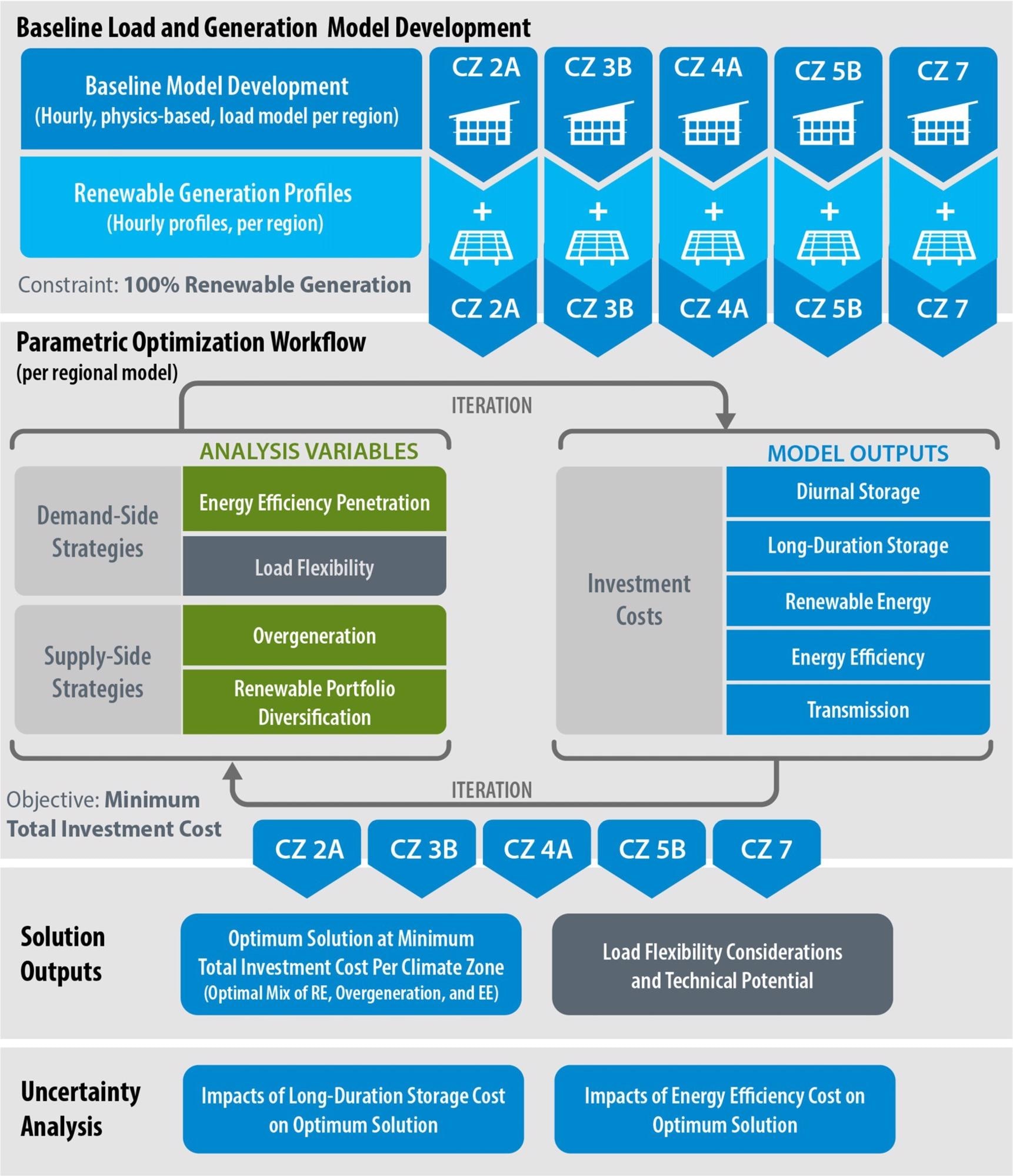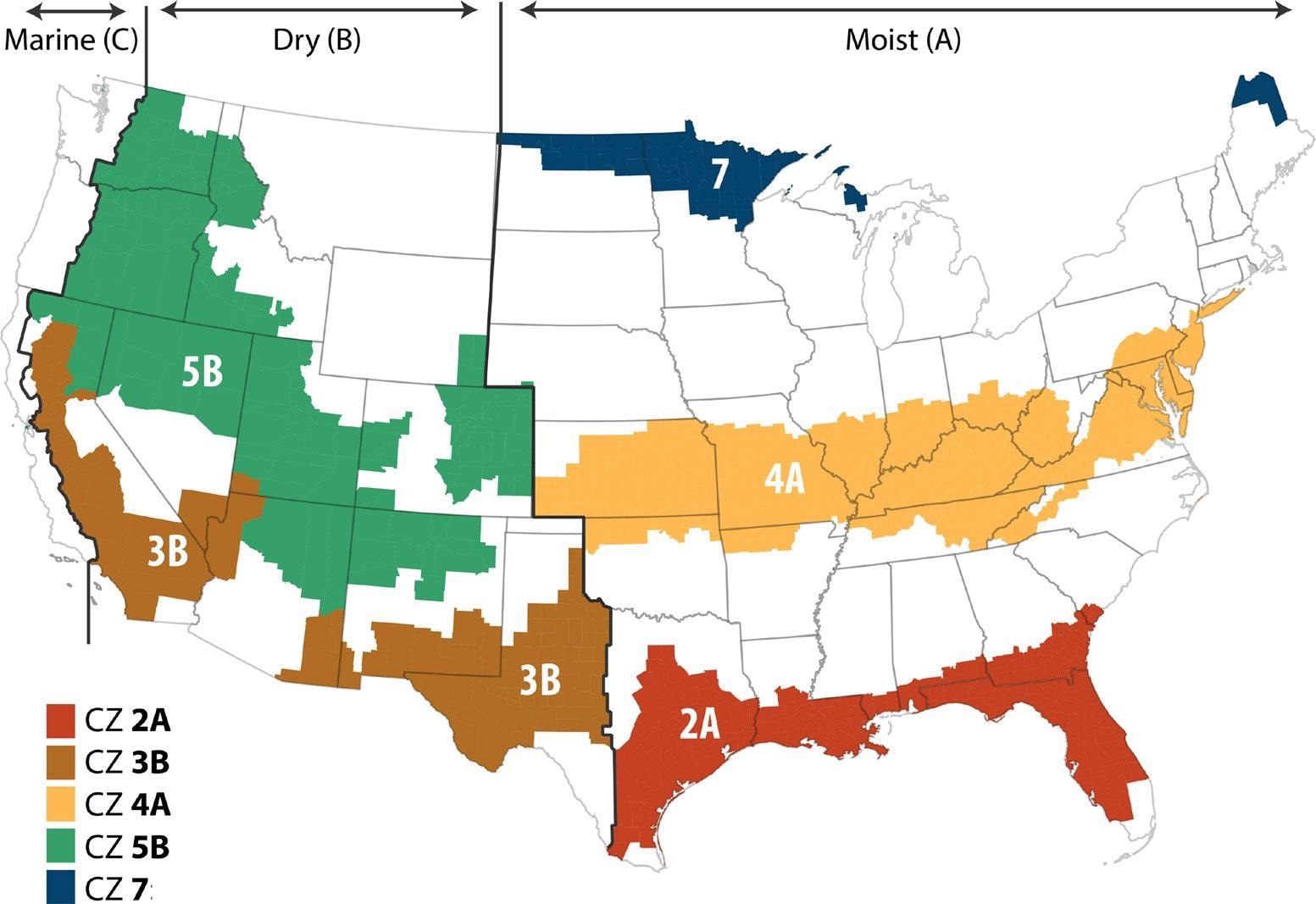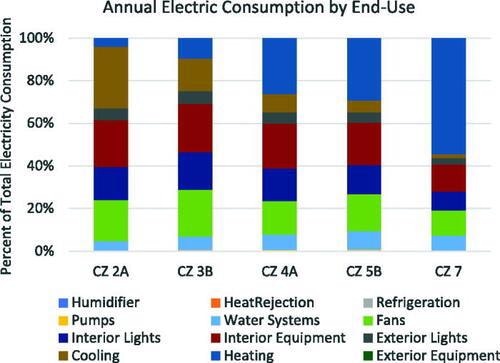The latest article in the Journal of Renewable and Sustainable Energy, by Houssainy and Livingood, focuses on cost-efficient ways for a 100% renewable sustainable energy grid for U.S. building stock. The research is focused on identifying cost-efficient, supply-side, and demand-side techniques to diminish significant associated costs related to energy storage for long durations.

Study: Optimal strategies for a cost-effective and reliable 100% renewable electric grid. Image Credit: hrui/SHutterstock.com
Energy Generation
The article states that grid reliability has always been a hurdle in the energy sector, where the major portion of energy generation is associated with variable generation (VG) (like solar energy) and solar photovoltaics (PV).
A majority of studies are focused on substantially increasing the grid reliability in high VG sources. Current research on VG penetration in power networks is mostly concerned with discovering techniques to reduce generating curtailment while enhancing the financial and economic value of renewable resources.

Analysis workflow used to develop baseline model loads, produce generation profiles, and optimize for cost-effective supply-side and demand-side strategies. This workflow outlines the high-level model input and output variables, solution results, and uncertainty analysis variables. Image Credit: Houssainy, S., & Livingood, W., Journal of Renewable and Sustainable Energy
Research Strategies
The latest research indicated that techno-economics of various energy generation sides were thoroughly assessed. A geographical examination of solutions to 100% renewable energy with the lowest overall investment costs in the United States was studied. The optimal regional development priorities, as well as accompanying breakdowns by effective energy resources, were established to meet the objective.
The next step involved the long-duration power storage cost objectives for upcoming storage solutions, determined based on geographical factors.
Research Methods
The researchers developed a demographic model that was considered a representative unit of the U.S. building stock. Load coverage factor (LCF) was the core quantitative unit and standard of measurement of 100% sustainability and renewable energy target. The LCF measure indicates the proportion of load served by renewable energy on an hourly basis, and a 100% renewable objective is deemed met when the LCF metric equals 1.

Modeled IECC climate zones39 that map to DOE BA climate regions.38 DOE prototype buildings, which were used to build the baseline model, are modeled in IECC climate zones, while EIA data, which were used to inform the aggregation of the models, are categorized by BA climate regions. This mapping reconciles DOE prototype IECC climate zone categories with EIA reported BA climate regions. Image Credit: Houssainy, S., & Livingood, W., Journal of Renewable and Sustainable Energy
The researchers initially developed demographic baseline models along with the generation profiles, in addition to the energy profile and building load flexibility model. The next key step involved regional parametric analysis, integrating the load flexibility. The last step involved the uncertainty analysis. The uncertainty analysis is essential for comprehending the storage impacts and efficiency metrics along with cost-efficiency.
Baseline Model Development
The experimental building models developed by the US Department of Energy (DOE) were used to estimate the requirements for a collection of facilities typical of the US building stock.
The DOE prototype building designs are based on speculation from the American Society of Heating, Refrigeration, and Air-Conditioning Engineers (ASHRAE) building standard 90.1. In the model articulation procedure, the generated collection of experimental building models took the climatic locales and building vintages into account.
The experimental building models relied on electricity as the core source of energy for the majority of their loads during the study. The heat pump COP was calculated using the ASHRAE 90.1 energy input ratio (EIR) curve.
Wind and solar PV generating were regarded to be 100 percent renewable power sources by the researchers. PV systems were designed with an inverter efficiency of 96 percent and a DC to AC ratio of 1.1. Furthermore, PV systems were considered to be oriented south-west.
Storage Requirements
These were divided into two types, the diurnal requirements, and long storage requirements. Electrochemical lithium-ion batteries were researched for advances in producers' and consumers' diurnal alignments. It was found that the battery functioned by keeping surplus produced power that did not exceed 75 percent of total storage capacity and then discharging it to serve the load when there was an unmet need. The study considered the scenarios in which power generated exceeded or was equal to the demand.
Load Flexibility
Load flexibility referred to any strategy that was used to alter facility demand profiles to meet renewable supply, except for electrical storage systems. The maximum potential of dedicated thermal storage options for shaping loads to match renewable generation was thoroughly studied by the researchers.
Sensitivity Analysis
It was found that the ideal storage capacity declined as long-term storage costs rose. As storage costs rose, the most cost-effective option was an increment in production factors. The storage durations and capacities for CZ 7 and CZ 4A reduce from the order of seasons to multi-day capacities at costs above $40/kWh.

The aggregated annual electric consumption of the baseline model by end-use in each modeled climate zone. Image Credit: Houssainy, S., & Livingood, W., Journal of Renewable and Sustainable Energy
To explore the effects of changes in building energy conservation investment costs on cost-optimal energy efficiency penetrations by area, a sensitivity analysis was performed. A 100% increase in energy efficiency expenses resulted in a 10% average decrease in the optimum energy efficiency penetration level.
Limitations
The research was only focused on building sectors with no estimation for industrial sectors. Land requirements and costs were also not incorporated, along with the added resiliency considerations and associated costs.
To summarize, although these limitations exist, the study has efficiently focused on 100% robust cost-effective energy production. The results are substantially useful due to the absence of research data on long-duration storage technologies and have successfully focused on cost-effective sustainable energy resources.
References
Houssainy, S., & Livingood, W. (2021). Optimal strategies for a cost-effective and reliable 100% renewable electric grid. Journal of Renewale and Sustainable Energy. https://aip.scitation.org/doi/10.1063/5.0064570
Disclaimer: The views expressed here are those of the author expressed in their private capacity and do not necessarily represent the views of AZoM.com Limited T/A AZoNetwork the owner and operator of this website. This disclaimer forms part of the Terms and conditions of use of this website.